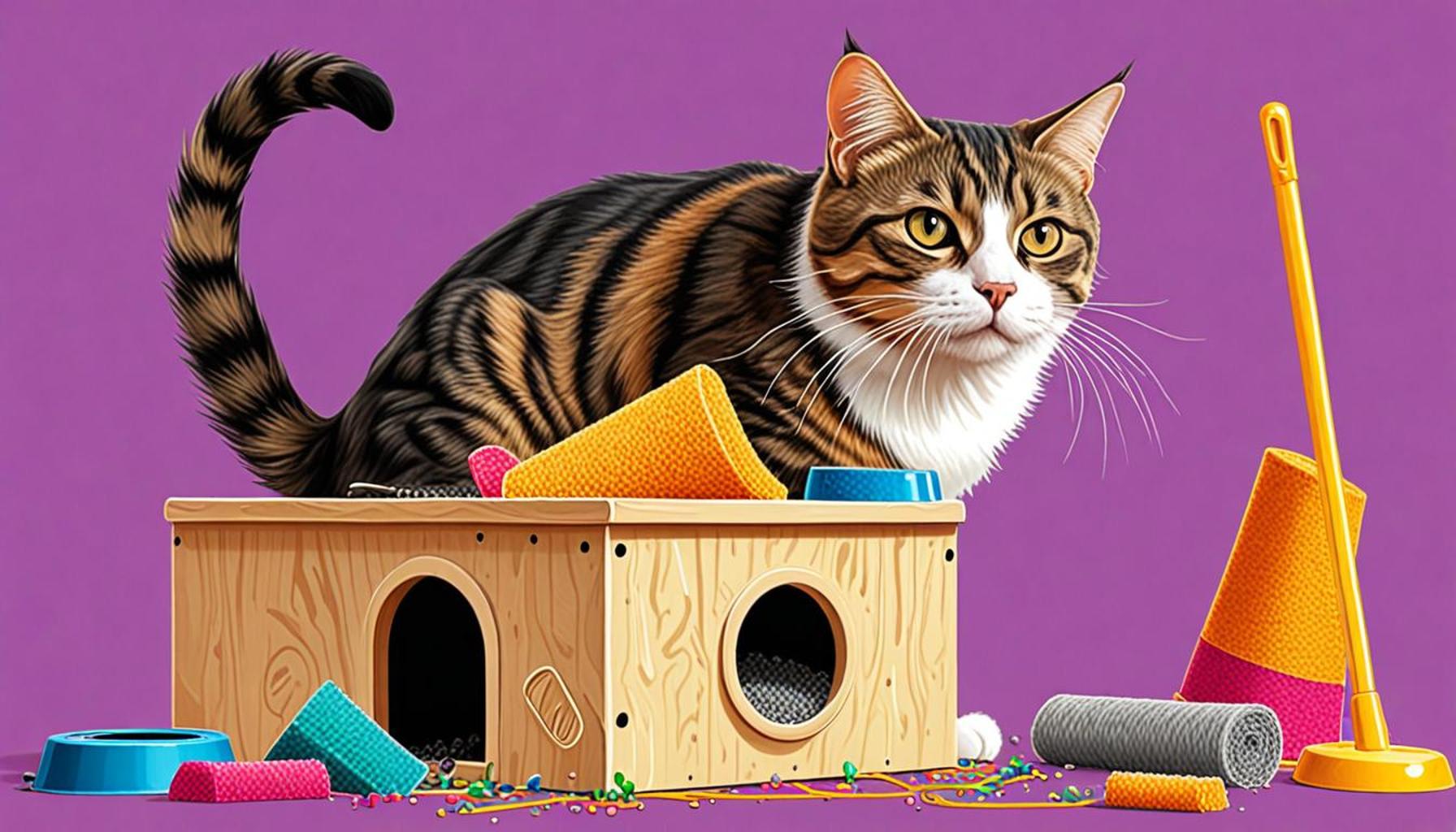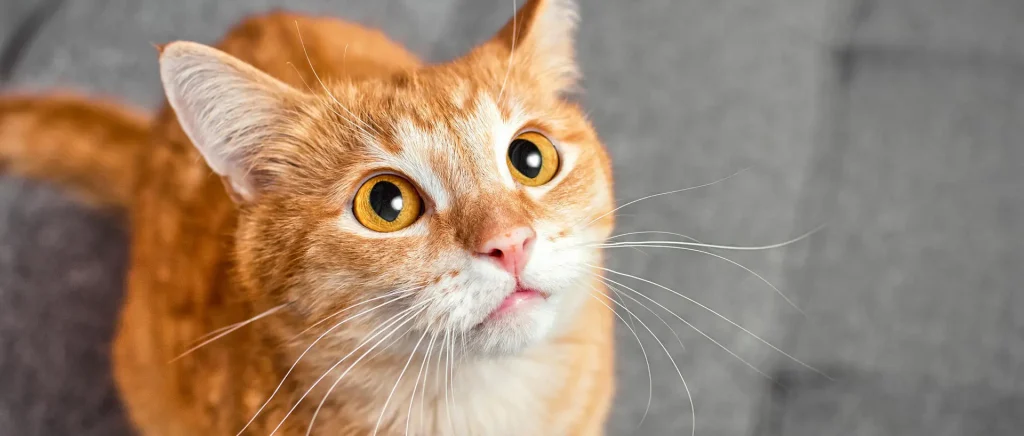Cat Training Techniques: How to Teach Your Feline to Use Scratching Posts and Litter Boxes

Understanding Your Cat’s Behavior
Training your cat can feel like a monumental task, yet it’s essential for establishing a peaceful and enjoyable living space. Unlike dogs, cats are inherently independent creatures that may not respond to training in the same manner. Therefore, it’s important to adopt specific strategies tailored to their unique personalities to promote desirable behaviors, particularly concerning scratching and elimination habits.
Key Training Techniques
Here are several vital techniques that can help you guide your feline friend toward better habits:
- Scratching Posts: Encourage your cat to use scratching posts instead of your terrestrial comforts like sofas or curtains. One effective way to attract your cat to the scratching post is to rub some catnip on it or choose one that has various textures and heights. This not only satisfies their natural instinct to scratch but also protects your furniture.
- Litter Boxes: Teaching your cat to consistently use the litter box is paramount. Choose the right type of litter that feels comfortable for your pet’s paws; many cats prefer fine-grained options. Placing the litter box in a quiet, accessible location away from their food and water can enhance their willingness to use it.
- Positive Reinforcement: Utilize treats, affection, and verbal praise to reward your cat when they display good behavior. This method not only encourages repetition of the desired behaviors but also strengthens the bond between you and your pet. For instance, if your cat uses the scratching post instead of the couch, immediately reward them with a treat to solidify that positive action in their mind.
Considering Local Norms and Resources
For many cat owners in Nigeria, grasping the subtleties of cat behavior can indeed be challenging. It’s essential to make use of readily available resources in your community. For example:
- Explore crafting homemade scratching posts from local materials such as palm fronds or sisal rope, which can be both economical and easy to find.
- Research the best types of litter available locally, considering options like clay-based or biodegradable alternatives that may be more accessible or affordable.
- Align your training methods with local cultural perspectives and consult with veterinarians for advice that suits the unique behavioral traits of Nigerian cats, which may differ from those in Western contexts.
The Journey of Training
By mastering these essential cat training techniques, you can foster a positive living environment for both you and your furry companion. Remember, effective training is not a quick fix; it requires patience, consistency, and sometimes inventive alternatives tailored to your specific circumstances. Explore the various strategies that not only enhance your cat’s behavior but also ensure that the training process is enjoyable for both parties involved.
YOU MAY ALSO LIKE: Read read another article

Understanding Feline Behavior
Delving deep into the world of feline behavior unveils how profoundly intertwined a cat’s instinctual needs are with effective cat training techniques. Unlike dogs, cats have retained many of their wild instincts, making it essential for cat owners to appreciate their natural tendencies. For instance, scratching is not merely a nuisance; it serves a purpose by maintaining the cat’s claw health, marking territory, and providing an outlet for pent-up energy. Recognizing these innate behaviors allows you to craft training strategies that align with their instincts, turning potential conflicts over scratching into opportunities for harmony.
Creating the Perfect Scratching Environment
Setting the stage for your cat to enjoy their scratching post instead of your beloved furniture is pivotal. Here’s how to create an enticing scratching environment:
- Location, Location, Location: Strategic placement is vital. Cats prefer to scratch in high-traffic areas where they can feel secure yet prominent. Position the scratching post in a cozy corner of the sitting room or adjacent to their favorite sunbeam to make it the center of their attention.
- Variety of Posts: Investing in a range of scratching posts can cater to your cat’s diverse preferences. For example, a tall sisal-covered post may appeal to a cat who likes to stretch, while a flat cardboard scratcher can engage the more playful feline. Understanding that a cat’s scratching needs may change over time is key to maintaining their interest.
- Incorporate Playtime: Enhancing the scratching post with dangling toys or interactive elements can transform it into a multifaceted play area. Such engagement encourages scratching and exercise, reducing boredom-induced behavior issues within the house.
Establishing a Litter Box Routine
Effective litter box training hinges on establishing a consistent routine. Here are crucial aspects to create a positive litter box experience for your feline friend:
- Box Size and Style: The dimensions of the litter box play an integral role in your cat’s willingness to use it. A general guideline is to select a box that allows your cat to maneuver freely. Large and spacious boxes are particularly beneficial for bigger breeds commonly seen, such as Maine Coons or larger local mixes.
- Litter Choice: Experimentation is often necessary to discover your cat’s litter preference. While some may gravitate towards clumping clay litters, others might favor softer, natural options. It’s advisable to avoid heavily scented litters that may deter your cat from using the box altogether.
- Regular Maintenance: Cats are notoriously clean creatures, and a dirty litter box can lead to avoidance. To maintain cleanliness, scoop out waste daily and perform a thorough cleaning at least once a week. This habit can make your cat feel more comfortable in their bathroom, encouraging consistent use.
By embracing your cat’s natural instincts regarding scratching and elimination practices, you pave the way for a more peaceful coexistence. Every cat has its personality, and achieving success in training might require patience and observation. Ultimately, with dedication and an understanding of your feline’s needs, you can foster favorable habits, creating a tranquil home environment where both you and your cat feel at ease.
Understanding Your Cat’s Behavior
To effectively train your cat, it’s essential to first understand their natural instincts and behaviors. Cats scratch to mark territory, sharpen their claws, and stretch their muscles. When introducing a scratching post, consider the material—cats prefer textures like sisal or cardboard. Position the post where your cat naturally scratches, which often includes areas near furniture or walls. Reinforce this behavior with positive reinforcement, such as treats or praise, when your feline uses the scratching post instead of the furniture.
Litter Box Training Essentials
Litter box training is often one of the first steps in acclimating a cat to an indoor environment. Choosing the right litter type can significantly affect your cat’s willingness to use the box. Most cats prefer fine-grained litter that mimics the texture of sand. Ensure the box is placed in a quiet, accessible area, away from food and water. Consistency is key; maintain a regular cleaning schedule as cats are clean animals and may refuse to use a dirty box. If issues arise, it may indicate a health concern or an aversion to the current setup.
Training Techniques: Tips and Tricks
Incorporating training techniques can enhance your cat’s learning experience. Utilize clicker training, where you pair the sound of a clicker with a reward when your cat successfully uses the scratching post or litter box. Start with short sessions to keep your cat engaged. Patience and persistence are vital; remember that every cat learns differently. Keep an eye on their progress and celebrate small victories along the way.
| Category | Advantages |
|---|---|
| Effective Scratching | Promotes claw health and prevents damage to furniture. |
| Clean Litter Habits | Reduces odors and promotes a hygienic living environment for both cat and human. |
Common Obstacles
Training a cat can come with its share of challenges. If your cat continues to ignore the scratching post, consider adding catnip to attract them. For litter box issues, check for any signs of discomfort or medical concerns, as this may necessitate a vet visit. Understanding these potential hurdles can ease the training process and enhance the bond between you and your feline friend.
RECOMMENDED: Check out this similar article
Positive Reinforcement: The Key to Successful Training
Utilizing positive reinforcement is crucial in cat training, particularly when teaching them to use scratching posts and litter boxes. Unlike punishment-based methods, which can induce fear and anxiety, positive reinforcement encourages desirable behavior and strengthens the bond between you and your cat. Here are some effective strategies to implement:
- Rewards and Treats: When your cat uses the scratching post or litter box successfully, immediately offer praise, treats, or playtime. This swift acknowledgment helps your feline associate the correct behavior with positive outcomes. Keep a stash of their favorite treats handy for prompt reinforcement, ensuring it becomes a part of your routine.
- Verbal Praise: Cats respond well to tone and inflection. Use a soothing voice when your cat engages in the desired behavior. Soft, upbeat tones can communicate your approval and may encourage them to repeat the action in the future.
- Clicker Training: Consider adopting clicker training as a method of reinforcement. By pairing the sound of the clicker with a treat, your cat learns that specific behaviors, like using a litter box or scratching post, elicit rewards. Clicker training is a precise way to pinpoint the behavior you want to encourage.
Understanding Overcoming Common Obstacles
Even with the best intentions, cat training may present challenges. Acknowledging and addressing these obstacles is essential for maintaining progress:
- Redirecting Scratching Behavior: If your cat shows reluctance towards the scratching post, observe where they typically scratch. If it’s on furniture, mimic that environment with similar materials or incorporate scents that attract them, such as catnip, on the scratching post. This tactic can redirect their behavior while reinforcing the use of the designated area.
- Inconsistent Litter Box Usage: Sometimes cats may refuse to use their litter boxes for reasons beyond cleanliness. Factors such as stress, illness, or changes in the environment can cause aversion. If your cat suddenly stops using the box, a visit to the vet might be necessary to rule out health issues. Consider providing multiple litter boxes, especially in multi-cat households, to ensure each has a sanctuary of their own.
- Behavioral Adjustments: Exploring your cat’s natural anxieties can yield insights. For instance, loud noises or unfamiliar guests may deter your cat from using the litter box. Crating or isolating them in a secluded area during disruptive moments can provide a sense of security, while ensuring they can access their litter box comfortably.
Patience and Persistence: The Essence of Successful Training
Training your feline companion takes time, and every cat is unique in its learning capability. Developing a patient attitude and maintaining consistency will ultimately yield results. Depending on your cat’s individuality, the training duration varies significantly. As a bonus, remember to allow your cat to set the pace; attempting to rush the training process can backfire and create resistance.
As you embark on this journey of educating your feline friend, not only are you reinforcing desirable behaviors, but you are also creating a nurturing environment that caters to their instincts. This approach fosters relationships that thrive on mutual respect and understanding, making your home a harmonious haven for both you and your cherished cat.
YOU MAY ALSO LIKE: Read read another article
Conclusion: Elevating the Human-Cat Bond through Effective Training
In conclusion, mastering cat training techniques related to scratching posts and litter boxes is an essential endeavor for every cat owner. By employing methods grounded in positive reinforcement, you not only encourage desirable behaviors but also cultivate a deeper affection and understanding between you and your feline friend. As you implement strategies such as rewards, verbal praise, and clicker training, remember that engaging your cat’s natural instincts plays a pivotal role in this journey.
Addressing common hurdles, like redirecting scratching behavior or fostering consistent litter box usage, enhances the overall training experience. By observing your cat’s preferences and potential anxieties, you can create an inviting environment that resonates with their instincts. Additionally, establishing a routine and remaining patient underscores your commitment to their well-being. As training progresses, you may find yourself not just teaching your cat but also learning from them in return.
Ultimately, successful training of your feline companion requires a blend of patience, persistence, and love. Feel free to explore various techniques, consult with fellow enthusiasts, or research new approaches to continue enhancing your cat’s training regimen. This harmonious effort fosters a fulfilling coexistence and transforms your home into a sanctuary, where affectionate bonds flourish and mutual respect reigns. Your journey into the world of feline behavior will unveil a richness of connection that adds joy and fulfillment to both your lives.



